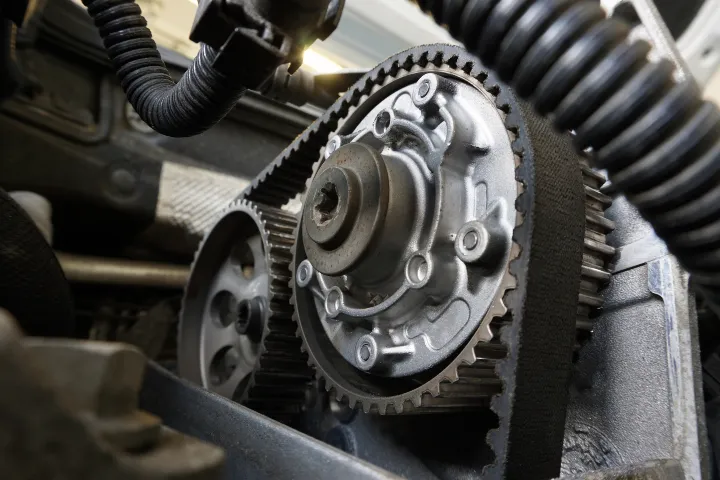When to change the timing belt

With so many different components to keep track of within your car, it can sometimes be difficult to keep on top of what needs replacing when. However, it’s crucial to make sure you have your cambelt changed at the recommended intervals. If the cambelt were to break while you were driving, the damage could be significant and may even result in your vehicle being written off.
How do I know if my cambelt needs changing?
First of all, it’s important to note that it’s not always possible to tell if your cambelt is on its way out. Timing belts can wear out without showing any of the below symptoms, which is why it’s so important to have yours checked regularly and replaced when recommended to avoid costly repair bills.
However, the signs listed below may mean that there’s a problem with your cambelt – or with another component in your car. Whether you think you know the cause of the issue or not, it’s best to get the problem checked out at your local autocentre so it can be fixed before it causes further damage to your vehicle.
Problems starting the engine
When your cambelt becomes worn and tired, it can make it harder to start your car – and it can be impossible if the cambelt has gone completely. This is because the cambelt synchronises the turning of the crankshaft and the camshaft – without it, the camshaft can’t turn and the engine can’t function properly.
Finding it difficult to start your car could also mean there’s a different problem within your engine, the battery or the internal connections within the vehicle.
Black smoke from the exhaust
If your car starts billowing dark, black smoke from the exhaust when you start it up, it’s often a sign that your fuel isn’t combusting properly. Incomplete combustion can be caused by a number of issues relating to the engine, one of which is a worn or damaged timing belt.
Loss of voltage
As we’ve mentioned, the cambelt’s job is to synchronise the two halves of the engine via the camshaft and the crankshaft. This is why it’s also known as a timing belt – because it controls the timing of the engine. If your cambelt breaks or slips out of position, that can affect the timing of the engine which may result in it misfiring.
This could cause:
- A loss of voltage
- Poorer fuel efficiency
- Lower power output
As with other signs of cambelt damage, these signs may be caused by other issues within the vehicle, so it’s best to get the problem checked out sooner rather than later.
Loud screeching noises
The sounds your car makes while you’re driving can be very helpful in terms of identifying when it’s time to take your vehicle into the garage. For instance, if you hear a sharp squealing sound, this may be an indication that the timing belt has become loose and needs to be replaced.
Other problems that could cause screeching sounds include worn brake pads or discs, which can severely impact your car’s braking ability if the issue isn’t fixed. And if you start hearing another unusual noise coming from your car, the best thing you can do is to get it seen by a professional mechanic who can help you to understand what’s happening.
Worn appearance
If you can see your cambelt easily when you open up the bonnet, this can be a good way to check if it’s in good condition or not. Here are some signs you should look out for:
- Shiny rubber
- Cracks to the surface of the belt
- Peeling areas
Each of these signs come about as a result of normal wear and tear, so it’s not necessarily a sign that any of your engine’s components are malfunctioning. However, when these signs show themselves it usually means that the cambelt is losing integrity and may be about to snap.
How often should a cambelt be changed?
To reiterate, the above signs can all be good indicators that something is wrong with your cambelt, but it’s possible and even likely that your cambelt will show no warning signs before failing. Because of this, it’s absolutely vital that you stick to the recommended replacement intervals to help avoid hefty bills for repairs.
So how often should you have your timing belt replaced? Well, there is a degree of variation between different makes and models, so your best bet is to check in your vehicle handbook for the manufacturer’s specific instructions. Remember, delaying your cambelt replacement puts you at a greater risk of serious engine damage, so try to have the replacement done as close to the next interval as possible.
As a rough estimate, you should have your cambelt changed after:
- Four years of constant use (e.g. daily commutes)
- 40,000 miles
- 5 years of age (regardless of frequency of use or mileage)
Staying up to date with replacing your cambelt is the best way you can protect your vehicle from damage due to a failed timing belt. If you’re at all concerned about the condition of your cambelt or you think there might be something wrong with your engine, get it checked sooner rather than later.
UPDATED